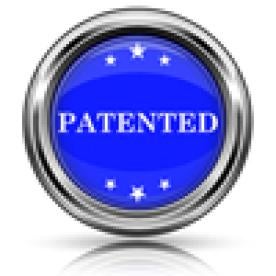Takeaway: A Petition was not denied under 35 U.S.C. § 325(d) merely for including references previously considered in the initial prosecution of the patent in the grounds of unpatentablity presented in the Petition, when the Petition also included additional references and new arguments including a declaration by an expert witness.
In its Decision, the Board instituted the inter partes review of claims 1-20 of the ’795 patent, because it was persuaded that there is a reasonable likelihood Petitioner would prevail with respect to at least one of the claims challenged in the Petition.
The ’795 patent generally relates to “a gas delivery device that may be utilized with a gas delivery system and methods for administering therapy gas to a patient.” Petitioner challenged claim 1-20 of the ’795 patent on the following grounds: (1) obviousness of claims 1-12 and 14-20 under 35 U.S.C. § 103(a) in view of Bathe, Peters, FR ’804, and the IR Standard; (2) obviousness of claims 4 and 5 under 35 U.S.C. § 103(a) in view of Bathe, Peters, FR ’804, the IR Standard, and Lebel; and (3) obviousness of claim 13 under 35 U.S.C. § 103(a) in view of Bathe, Peters, FR ’804, the IR Standard, and Durkan. Petitioner also relied on the Declaration of Dr. Stone to support its arguments.
Both parties agreed that the claim terms of the ’795 patent have their plain and ordinary meaning, and neither party provided a specific interpretation for any of the claim terms. Thus the Board did not construe any terms, because no term was in dispute.
Patent Owner argued that the Petition should be denied because the Bathe and Peters references were considered by the Examiner during prosecution of the patent as evidenced by their citation in an Information Disclosure Statement, and because Peters was relied upon by the Examiner in a specific rejection during prosecution. Specifically, Patent Owner argued that Petitioner “relies on substantially the same prior art and presents substantially the same arguments that Patent Owner already overcame during prosecution,” and thus should be denied based on 35 U.S.C. § 325(d). The Board explained that 35 U.S.C. § 325(d) grants the Director discretion to take into account whether the same or substantially the same prior art or arguments previously were presented to the Office when determining whether to institute a proceeding. However, acknowledging that Bathe and Peters were considered during prosecution, the Board noted that Patent Owner fails to “identify with specificity where ‘substantially the same . . . arguments’ – substantially the same combinations of references – were before the Examiner.” Absent such identification, and because Petitioner also included additional evidence not considered by the Examiner and a declaration of Dr. Stone, the Board determined that Patent Owner did not show that the inter partes review of the ’795 patent would be improper under 35 U.S.C. § 325(d).
The Board then turned to the obviousness grounds. Petitioner’s arguments of obviousness provided evidence of each of the features of the claims being present in the prior art and rationale for why it would have been obvious to combine those features. Patent Owner argued that the primary reference Peters fails to disclose certain features of the claims. However, the Board found that those features were found in the other references asserted by Petitioner. Patent Owner also argued that Petitioner had failed to identify a reason why one of ordinary skill in the art “would store the gas data from FR ’804 or Bathe in the valve memory of Peters before sending to a control module such as in Bathe.” However, the Board determined that Petitioner had provided that one of skill in the art would have a reason to combine the references when looking to improve upon the safety and efficacy of a known gas delivery system, and that such a reason is not a capricious or implausible statement of motivation. Further, the Board disagreed with Patent Owner’s argument that a person of ordinary skill in the art would conclude “that the smart valve of Peters could only be used for billing purposes,” and not used for gas therapy purposes. Based on these findings, as well as other similar findings, the Board determined that Petitioner had demonstrated there is a reasonable likelihood of establishing the unpatentability of claims 1-20 of the ’795 patent, and thus the Board instituted inter partes review of those claims.
Praxair Distribution, Inc. v. INO Therapeutics, LLC, IPR2015-00893
Paper 14: Decision Denying Institution of Inter Partes Review
Dated: September 22, 2015
Patent: 8,776,795 B2
Before: Ken B. Barrett, Michael J. Fitzpatrick, and Scott A. Daniels
Written by: Barrett
Related Proceedings: INO Therapeutics LLC et al. v. Praxair Distribution, Inc. et al., Civil Action No. 1:15-cv-00170 (GMS) (D. Del.)



 />i
/>i

